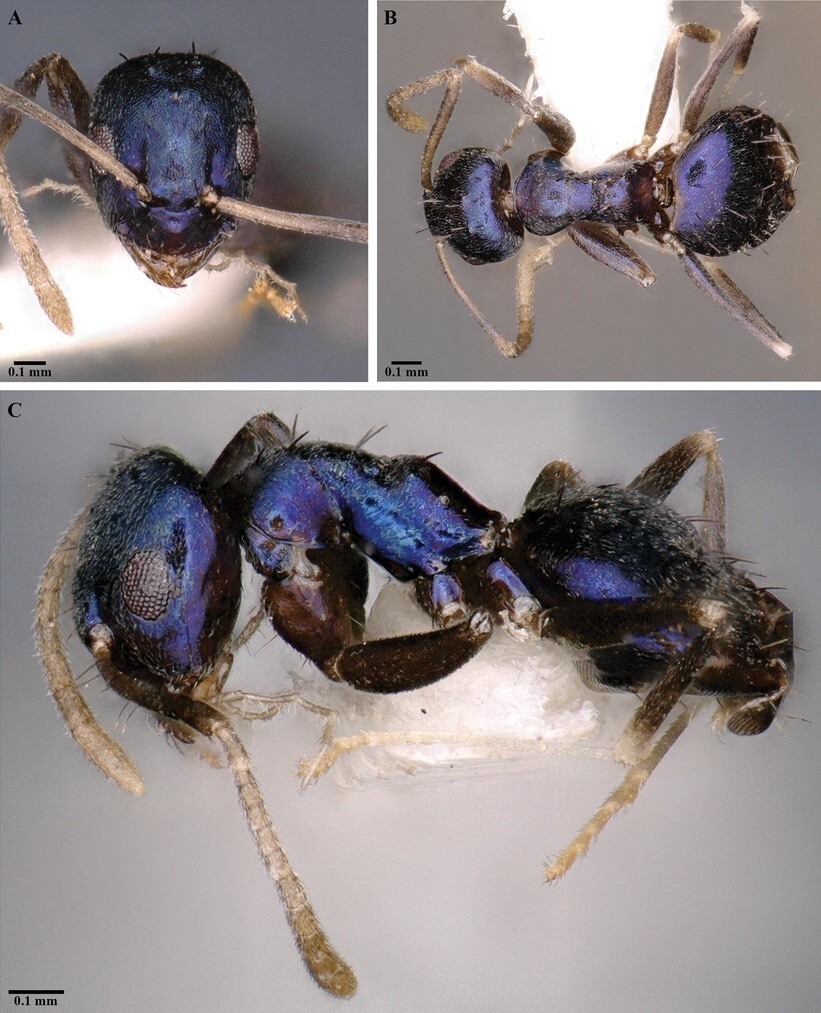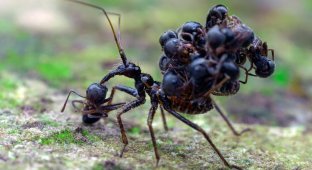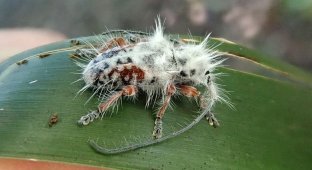An unusual species of blue ants discovered in the remote Indian Siang Valley (2 photos)
Unlike the usual red, black or brown ants, the stunning blue ant was discovered in Inku village in Arunachal Pradesh in northeast India. This new species belongs to the rare genus Paraparatrechina and has been named Paraparatrechina neela. 
The word "neela" in most Indian languages means blue, as a tribute to the unique coloration of ants. The discovery marks the first new species of Paraparatrechina in 121 years since the description of the only previously known species, P. aseta, from the Indian subcontinent.
Entomologists Dr Priyadarsanan Dharma Rajan and Sahanashree R from the Ashoka Trust for Research in Ecology and Environment (ATREE) in Bengaluru along with Aswaj Punnath from the University of Florida have jointly described this new species. Their scientific description of the ant has been published in the journal ZooKeys.
“One evening, while exploring a hollow tree about three meters high on a steep cattle road in the remote village of Inku, we saw something flash in the dusk. In the dim lighting, two insects were sucked into the aspirator. To our surprise, we later discovered that they were ants,” the scientists share.
Paraparatrechina neela is a small ant with a total length of less than 2 mm. Its body is predominantly metallic blue, with the exception of its antennae, mandibles, and legs. The head is subtriangular in shape, with large eyes and a triangular part of the mouth (lower jaw) with five teeth. This species has a distinct metallic blue color that is distinct from any other species of its genus. 
Blue is a relatively rare color in the animal kingdom. Various groups of vertebrates, including fish, frogs and birds, as well as invertebrates such as spiders, flies and wasps, exhibit blue coloration. In insects, it often results from the arrangement of biological photonic nanostructures that create structural colors rather than being caused by pigments.
Although blue coloration is commonly seen in some insects such as butterflies, beetles, bees and wasps, it is relatively rare in ants. Of the 16,724 known species and subspecies of ants worldwide, only a few are blue or iridescent.
“Located at the biodiversity hotspot of the Himalayas, the Siang Valley in Arunachal Pradesh is a world of unprecedented diversity, much of which is yet to be explored. However, this very wealth, both cultural and environmental, faces unprecedented threats. Large-scale infrastructure projects such as dams, highways and military installations, along with climate change, are rapidly changing the valley. The impact extends beyond the valley itself, as these mountains play a critical role not only in maintaining their own diverse ecosystems, but also in ensuring the well-being of millions of people. people living downstream,” said Dr. Priyadarsanan Dharma Rajan.
























